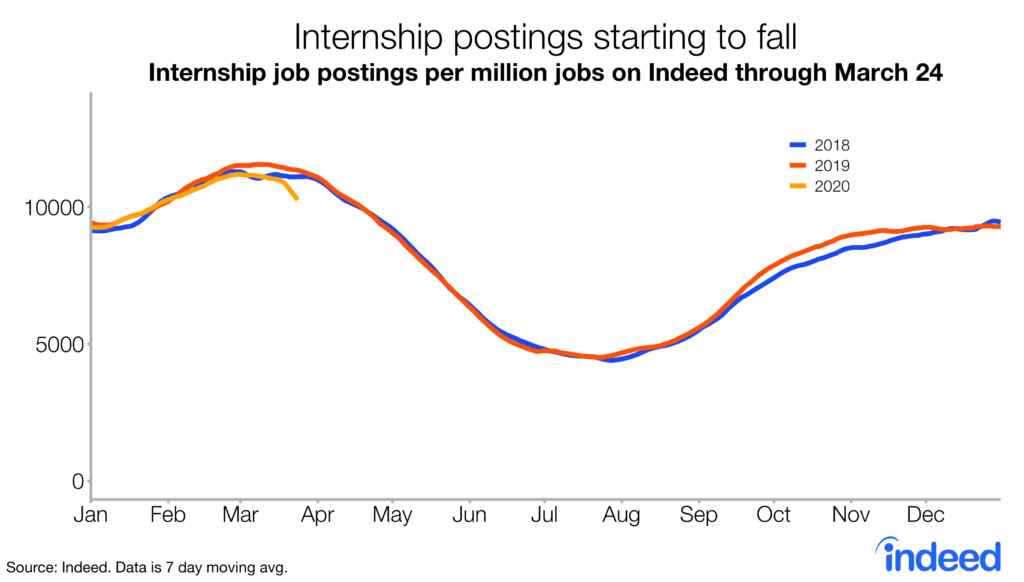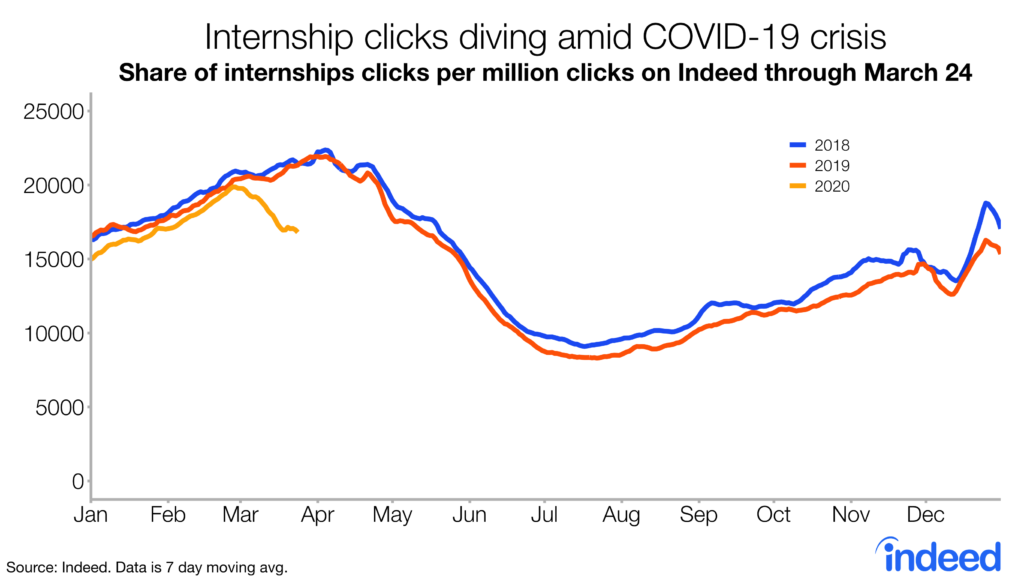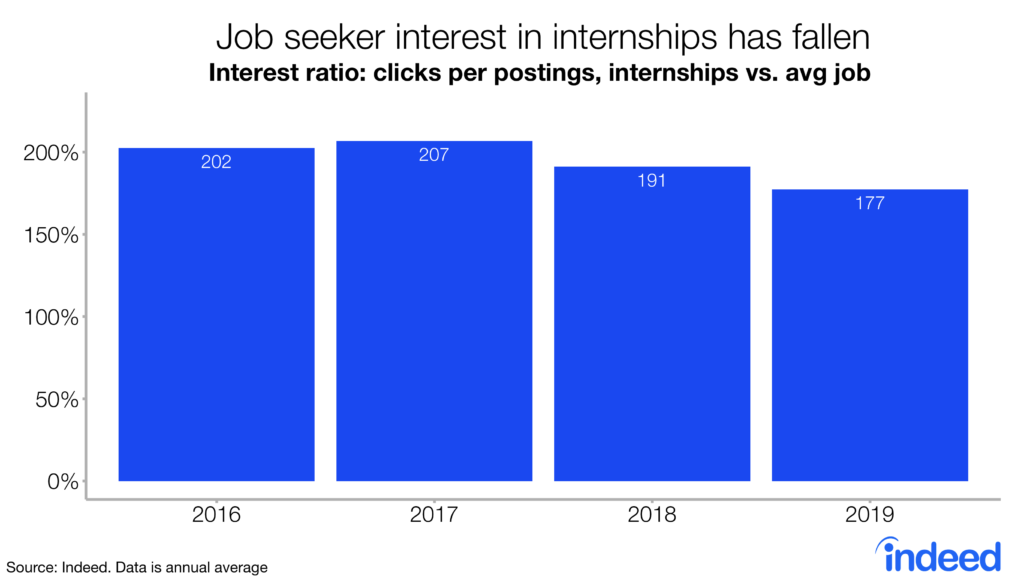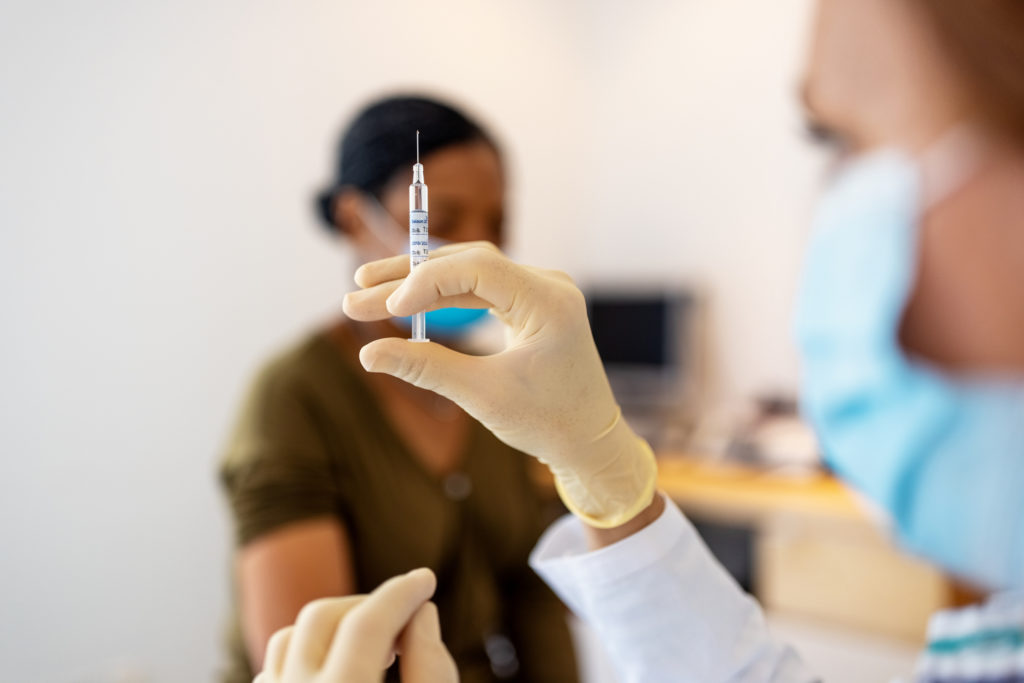Key Points
- As of March 24, job seeker interest in internships has fallen by 21% amid the COVID-19 crisis.
- Takeaway for jobseekers: Internship opportunities are still out there, but they’re just one of many ways to build professional skills – virtually networking or online coursework are other options.
- Takeaway for employers: In the social distancing era, employers may want to highlight virtual work options to attract interns.
Usually at this time, college students are planning out their summers and pondering internship opportunities. However, due to COVID-19, many college campuses are now closed for the rest of the school year. With students now finishing their coursework virtually, it’s an unprecedented era with summer internship opportunities in limbo.
Internships are traditionally an avenue to both try out a possible career field as well as gain professional experience, which can provide a leg up in the job search process. They are also an opportunity for employers to get some extra help and create a recruiting pipeline for full time positions. However, in the age of social distancing, employers may have to shift their internship to virtual opportunities to be able to still attract the intern talent they need.
Internship postings are below previous years

In early 2020, employer demand for interns was in line with previous years. But as the COVID-19 outbreak progressed, employer demand for interns has dwindled. Internship postings traditionally peak in late March and early April, but this year, internship postings are already falling as of early March.
Interest in internship opportunities has severely declined

However, employers who are still offering internships may struggle to find the interns they need. As the COVID-19 outbreak escalates, the share of clicks on internship postings has seen a sharp decline. Clicks on internships traditionally peak in late April, about a month after internship postings do. Yet this year, the share of total clicks on internships tumbled in mid-March, down 21% from the same time last year. With interest in early 2020 already below that of previous years, questions about when the crisis will end have put a damper on internship seeker interest. To fill intern positions, employers may have to explore virtual options to find the talent they are looking for.

Even before this year, interest in internships from job seekers was starting to wane relative to employer demand. Last year, the typical internship position received 177% more clicks than the average job posting, 14.5% less than in 2017, when they got more than double. This was likely due to the broad tightening of the US labor market. While internships still received more clicks per posting than the average job, it’s become progressively more difficult for employers to fill internship openings.
One way to catch internship seekers’ attention is to promote remote work options for internship opportunities. Over the past twelve months, only 0.1% of internship postings mentioned terms like ‘remote’ or ‘virtual’ in the internship title. In light of social distancing, employers have an opportunity to secure intern talent while keeping their workforce safe.
Conclusion
It looks like summer 2020 will see few students and recent grads participating in internships. Employer demand for interns is softening as the COVID-19 outbreak worsens and internship seeker interest has substantially fallen. Since it’s unclear how long this crisis will last, advertising remote work options can help employers attract intern talent. For job seekers, there’s still internships out there but there are also other ways to build professional skills, such as online classes or virtual networking.
Methodology
We define internship job postings as where ‘intern’ or ‘internship’ appears in the title. Internship postings and clicks data is up till March 24, 2020. We define remote internship as an internship job posting that contains ‘remote’, ‘virtual’, ‘telework’ or ‘telecommute’ in the title of the posting.
To measure internship seeker interest, we examine labor market tightness through the number of clicks that an internship posting receives relative to the average job posting. The more clicks per posting relative to the national average, the higher internship seeker interest is for that internship posting.






